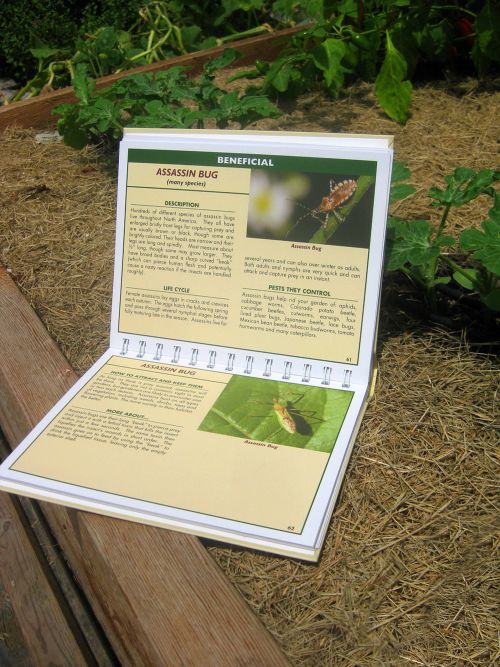
As a seasoned gardener who’s now utilizing only organic methods of pest control, I am always seeking easier ways to use those methods. A lot of it, I realize, will come with time and experience. Two of the principals of Integrated Pest Management (IPM) are monitoring and biological control. Monitoring is regular observation, and is broken into two steps: first – inspection and second – identification. Biological control focuses on promoting beneficial insects that eat or parasitize target pests. Jessica Walliser’s book, Good Bug Bad Bug, helps to achieve these two principals.
Good Bug Bad Bug is an indispensable “field guide” for quickly and easily identifying the most common pests and beneficial insects in the garden. It also contains great advice on how to attract the good guys and manage pests organically. The 2nd edition of the book contains a number of color photographs not seen in the 1st edition and adds three new “bad bugs” to the insect listings. The author makes the point that, “…you don’t have to be a hard-core organic gardener to use this book. You do, however, have to be willing to learn.” The strategy, as discussed in the book, follows four simple steps:
1. Begin with proper identification of the pest and the plant host
2. Utilize any preventive and cultural measures available
3. Employ live biological controls (beneficial insects) to consume the pest
4. Turn to organic product controls only when necessary
First of all, the format of the book is perfect for what it’s designed to be used for. Its dimensions are similar to a medium-sized greeting card, so it can easily be taken out to the garden, or put in your favorite garden tool holder or bucket. The pages are laminated card stock, tough enough to use in the garden regularly for easy reference. Now, into the book…
The introduction section of the book discusses general facts about insects and the effects of global climate change on pest patterns. Organic gardening techniques are discussed as well. The intro section concludes with how to use the book.
The first half of the book covers twenty-seven of the most common pests you’re likely to come across. The information is sub-divided into: description, spot the damage, live biological controls, preventive actions, organic product controls, and more about. The text is easy to read and the photography is high-quality and fairly clear.
The second half of the book is devoted to fourteen “heroes of the garden,” a.k.a., the beneficial insects. The information here is sub-divided into: description, life cycle, pests they control, how to attract and keep them, and more about.
Wrapping up the book are a garden glossary, and appendixes on organic product information and a source directory.
I have very little to comment on how the book could be improved. The size of the insect is mentioned, but an actual size icon/photo would have been helpful (down to a certain size, of course). Although some of the insect photos showed the insect’s eggs and nymph stages, having all of the stages represented on each listing would have been awesome. If a photo of that stage wasn’t possible, an illustration would probably suffice.
Overall, the book is a great, concise, well-designed, easy-to-use resource for gardeners. A “must-have” in your book library. The book is great for adults, but also could be a great teaching tool for curious and adventuresome kids.
The book is published by St. Lynn’s Press. It is available through Amazon (starting at $11) and other retailers.






















Comments
Log in or create an account to post a comment.
Sign up Log in